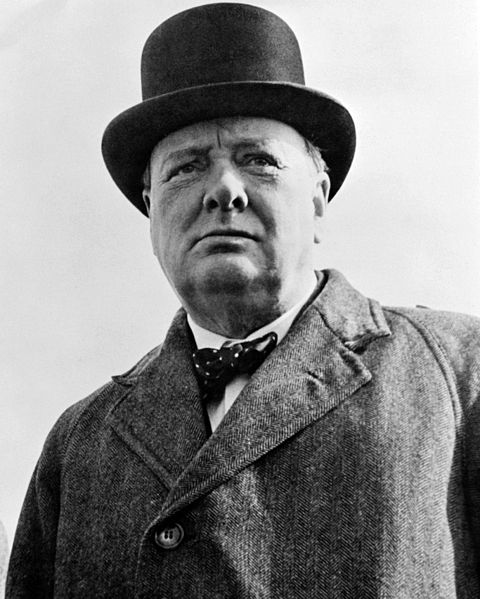Triumphs and Tribulations: Navigating Success and Failure in Leadership

Embarking on a Leadership Odyssey: Success and Failure as Your Compass
In the complex and ever-evolving realm of leadership development, the intertwined concepts of success and failure have long been the bedrock upon which great leaders are forged. As an expert-author and thought leader with over four decades of immersion in this discipline, I have witnessed firsthand the transformative power of these twin pillars. While my journey in the field has spanned a significant portion of my life, this article is not about me. It’s about a profound truth that transcends time and individual experiences: the undeniable synergy between success and failure.
In the world of leadership, where success is often exalted and celebrated, and failure is shunned and stigmatized, it is crucial to peel back the layers of perception and dig deep into the essence of these seemingly disparate phenomena. What is success, really? What is failure, in its truest sense? How do they interplay in the development of exceptional leaders? These are questions that have occupied the minds of scholars, thinkers, and practitioners for centuries, and they continue to be the driving force behind the ever-evolving field of leadership development.
In the pages that follow, we will embark on a profound exploration of these concepts, weaving together insights from psychology, history, and the stories of exceptional leaders who have grappled with these questions and emerged stronger and wiser. We will delve into the paradoxical relationship between failure and success, examining why, counterintuitively, failure can be the most potent catalyst for achieving remarkable heights in leadership.
While the discussion will revolve around these abstract notions, it is essential to remember that the principles we will uncover have tangible, real-world implications. Leadership is not merely an academic exercise or a theoretical concept; it is a dynamic force that shapes organizations, communities, and even entire nations. Understanding how to harness the power of both success and failure is the key to unlocking one’s full leadership potential.
But it doesn’t stop there. This article isn’t just a theoretical exploration—it’s a practical guide for leaders at every stage of their journey. Whether you are a seasoned executive, an aspiring manager, or a student just embarking on your leadership path, the insights shared here will offer you a roadmap for navigating the complex terrain of leadership with wisdom and resilience.
So, as we embark on this enlightening journey through the realms of success and failure, keep an open mind and a receptive heart. Embrace the idea that leadership is a continual process, a tapestry woven from both triumphs and tribulations. As we uncover the profound lessons contained within these twin pillars, you will be equipped with the knowledge and tools to not only handle success and failure but to flourish in their midst. It is my sincerest hope that, by the end of this journey, you will emerge not just as a leader, but as a catalyst for positive change in the world.
Success and Failure: Unraveling the Tapestry
In the tapestry of leadership development, success and failure are the warp and weft, the threads that intertwine to create the intricate pattern of leadership growth. To navigate this terrain effectively, we must begin by unraveling these foundational concepts and understanding their essence.
Defining Success
Success, often seen as the pinnacle of achievement, is a multifaceted and elusive concept. In the context of leadership, it goes beyond personal accomplishments and monetary gains. True success in leadership is about positively impacting individuals, teams, organizations, and even entire societies. It is a state of being in which one’s actions align with their vision, values, and purpose.
Successful leaders exhibit qualities such as vision, resilience, empathy, and the ability to inspire and motivate others. They foster innovation, collaboration, and sustainable growth. However, it’s essential to recognize that success is not a static endpoint but a dynamic, ever-evolving state. It is not something you achieve once and for all but an ongoing journey of growth, adaptation, and continuous improvement.
Defining Failure
Failure, on the other hand, is a concept often laden with negative connotations. In many cultures, failure is stigmatized, feared, and avoided at all costs. Yet, failure is an integral part of the human experience and, by extension, the leadership journey. In essence, failure is not the opposite of success; rather, it is a crucial component of it.
Failure can take various forms, from small setbacks and mistakes to more significant challenges and crises. It can occur in personal and professional domains and may involve misjudgments, missed opportunities, or unmet expectations. However, the defining characteristic of failure is not the event itself but how one responds to it.
In leadership, failure can be a powerful teacher. It provides the opportunity for self-reflection, learning, and growth. It forces leaders to reevaluate their strategies, assumptions, and behaviors. It is through failure that leaders often discover their true strengths and weaknesses, developing the resilience and humility required to lead effectively.
The Interplay Between Success and Failure
Success and failure are not isolated events but part of an intricate dance. Successes can arise from the lessons learned in failure, and failures can humble and refine even the most successful leaders. The interplay between these two forces is dynamic and symbiotic.
When leaders succeed, they build confidence, validate their approaches, and achieve their goals. Success can be a source of motivation and validation, reinforcing a leader’s belief in their abilities and strategies. However, unchecked success can also lead to complacency and hubris, potentially setting the stage for future failures.
Conversely, failure can be the catalyst for transformative change. It forces leaders to reevaluate their methods, seek new perspectives, and adapt to changing circumstances. Failure can serve as a wake-up call, prompting leaders to question their assumptions and make necessary adjustments. In this way, failure becomes a crucial stepping stone on the path to success.
As we continue our exploration of success and failure, we will delve deeper into the paradox of failure as a key to success, uncovering the valuable lessons it offers and the ways in which embracing failure can lead to more resilient, empathetic, and effective leaders. The journey ahead will reveal that, in the world of leadership, success and failure are not opposing forces but complementary facets of a leader’s growth and evolution.
Paradox of Failure as a Key to Success
In a world that celebrates achievements and often glosses over the struggles and setbacks, it’s essential to confront the paradox that lies at the heart of leadership development—the idea that failure can be a key to success. This paradox challenges our conventional notions of success and invites us to reframe our understanding of failure.
Fear of Failure
To appreciate the role of failure as a catalyst for success, we must first acknowledge the deep-seated fear of failure that permeates our society. From a young age, many of us are conditioned to fear making mistakes or falling short of expectations. We are taught that failure is something to be avoided at all costs, often at the expense of taking risks and pursuing our ambitions.
In the realm of leadership, this fear of failure can manifest in various ways. Leaders may hesitate to make bold decisions, innovate, or embrace change for fear of making mistakes that could damage their reputation or derail their careers. This fear can stifle creativity, hinder growth, and ultimately lead to missed opportunities for both personal and organizational development.
Transformative Power of Failure
Yet, history and the stories of great leaders tell a different tale—one of resilience, perseverance, and the transformative power of failure. Consider the words of Thomas Edison, who famously said, “I have not failed. I’ve just found 10,000 ways that won’t work.” Edison’s numerous “failures” in his quest to invent the light bulb ultimately led to one of the most significant innovations of the modern era.
In the context of leadership, failure can be a catalyst for growth and self-discovery. It is often during moments of adversity and challenge that leaders are pushed to their limits, prompting them to tap into their creativity, problem-solving abilities, and resilience. Failure forces leaders to confront their vulnerabilities and adapt their strategies, ultimately making them more capable and well-rounded.
Learning from Failure
One of the critical elements of leveraging failure as a stepping stone to success is the ability to extract valuable lessons from setbacks. When leaders face failure with a growth mindset—a belief that challenges are opportunities for learning and growth—they are more likely to emerge from adversity stronger and more capable.
Leaders who embrace failure as a teacher engage in self-reflection to understand what went wrong, why it happened, and how they can improve. They seek feedback from others and are open to different perspectives. This process of introspection and continuous improvement is what distinguishes leaders who thrive in the face of adversity.
Embracing Failure as a Stepping Stone to Success
Embracing failure as a key to success is not about seeking out failure or becoming complacent with mediocrity. It’s about reframing our relationship with failure, recognizing it as a natural part of the journey, and understanding that it does not define us but rather refines us.
Successful leaders are not immune to failure. In fact, they often have a history of setbacks and challenges that have contributed to their growth and resilience. By acknowledging and learning from failure, leaders can become more empathetic, compassionate, and adaptable. They can inspire their teams to embrace a culture of innovation and risk-taking, ultimately driving progress and success.
As we move forward in this exploration, we will delve deeper into the practical aspects of handling both success and failure in leadership. We will uncover strategies for harnessing the power of these forces, ensuring that they propel us toward our full potential as leaders. In doing so, we will unravel the threads of this paradox, revealing how failure, when embraced with courage and an open heart, can indeed be a key to unlocking the door to enduring success in the realm of leadership.
Success: A Continual Journey
In our quest to understand the intricate dance between success and failure, we must not perceive success as a static destination but as a dynamic and perpetual journey. True success in leadership is not a single achievement, but an ongoing process of growth, adaptation, and relentless pursuit of excellence.
Illusion of the Destination
One common misconception about success is that it represents a fixed endpoint—a moment in time when all goals have been achieved, and the journey is complete. This notion can be misleading, as it implies that success is a finite resource, limited to those few who manage to reach it. Such a perspective can lead to complacency, as individuals may rest on their laurels once they believe they have attained success.
Leaders who view success as a destination often find themselves trapped in a cycle of short-lived victories, followed by stagnation or decline. They fail to recognize that the path to success is not a straight line but a winding, unpredictable journey marked by peaks and valleys. This perspective undermines the essence of leadership, which thrives on continuous growth, adaptability, and the pursuit of new challenges.
Dynamics of Sustaining Success
For effective leaders, success is not an end but a means to greater achievements. Achieving a milestone or reaching a particular goal should serve as a stepping stone to the next challenge, a catalyst for continued improvement. Leaders who understand this dynamic engage in a process of constant self-assessment and renewal.
Sustaining success requires a proactive approach. It involves setting new, ambitious goals, fostering innovation, and pushing the boundaries of what is possible. It means recognizing that success can be fleeting, and to remain relevant and impactful, leaders must evolve and adapt to changing circumstances.
Dangers of Complacency
One of the most significant pitfalls associated with success is complacency. When leaders become complacent, they risk losing the very qualities and attributes that led to their success in the first place. They may stop questioning the status quo, resist change, and become overly confident in their abilities.
Complacency can lead to a decline in performance and a loss of credibility as leaders rest on their past achievements. It can also result in missed opportunities, as leaders may fail to recognize emerging challenges or shifts in the external environment.
To combat complacency, successful leaders remain vigilant and self-aware. They seek out feedback, surround themselves with individuals who challenge their thinking, and continually strive for personal and professional growth.
Resilience and Adaptability
Sustaining success hinges on resilience and adaptability. Resilient leaders can weather setbacks and disappointments without losing their sense of purpose or determination. They view challenges as opportunities for growth rather than as insurmountable obstacles.
Adaptable leaders possess the capacity to pivot and adjust their strategies in response to changing circumstances. They are not wedded to a single approach or solution but are open to experimentation and innovation. This adaptability allows them to stay ahead in dynamic and competitive environments.
Success is not a destination; it is a continual journey of growth and development. Effective leaders understand that achieving success is just one chapter in their leadership story, and they remain committed to the pursuit of excellence. They guard against complacency, cultivate resilience, and embrace adaptability as they navigate the complex terrain of leadership. In the next section, we will shift our focus to the equally critical aspect of handling failure, exploring strategies for turning setbacks into stepping stones toward even greater success.
Handling Success: The Art of Staying Grounded
Success, as we have discussed, is a continual journey in leadership development. Yet, as leaders ascend to new heights and achieve their goals, they must grapple with the challenges and responsibilities that accompany success. Handling success with grace and humility is an art that distinguishes great leaders from the rest.
Staying Humble and Grounded
One of the foremost challenges in handling success is the potential for arrogance and a sense of entitlement to take root. As leaders achieve recognition, power, and influence, there is a natural inclination to believe they have reached a superior status. This sense of superiority can distance leaders from their teams, hinder collaboration, and erode trust.
Humble leaders, on the other hand, recognize that success is often a collective effort and acknowledge the contributions of those around them. They maintain a sense of gratitude and humility, understanding that their journey is ongoing and that they still have much to learn. This humility allows them to remain approachable and relatable to their teams and constituents.
Guarding Against Ego and Hubris
Ego and hubris are insidious companions that can accompany success if left unchecked. Ego-driven leaders may prioritize their personal interests over the welfare of their organizations or teams. They may become resistant to feedback, dismissive of dissenting voices, and prone to making impulsive decisions.
Leaders who effectively handle success are vigilant in guarding against the pitfalls of ego and hubris. They actively seek out diverse perspectives and encourage open dialogue within their teams. They understand that leadership is not about having all the answers but about fostering an environment where collective intelligence and collaboration can thrive.
Setting New Goals and Challenges
To prevent complacency and stagnation after achieving success, leaders must continually set new goals and challenges for themselves and their teams. Success can breed contentment, but great leaders recognize that there is always room for improvement and innovation.
Setting new goals allows leaders to maintain a sense of purpose and momentum. It keeps their teams engaged and motivated, as they are presented with fresh opportunities to learn and grow. Effective leaders encourage a culture of continuous improvement, where success is not a reason to rest but a catalyst for striving for even greater heights.
Navigating the Pressures of Success
The pressures that come with success can be daunting. As leaders gain prominence, they may face increased scrutiny, heightened expectations, and greater demands on their time and energy. Navigating these pressures effectively requires resilience and a commitment to self-care.
Leaders who handle success well recognize the importance of self-care and work-life balance. They understand that their well-being directly impacts their ability to lead effectively. They prioritize mental and physical health, seek support when needed, and maintain a sense of perspective amidst the demands of their roles.
In essence, handling success in leadership is not about downplaying achievements or shying away from recognition. It is about embracing success with humility, guarding against the trappings of ego, setting new challenges, and managing the pressures that accompany it. Successful leaders who master this art are not only admired but also inspire and empower those around them to strive for excellence.
In the next section, we will shift our focus to another crucial aspect of leadership development—the art of handling failure and leveraging it as a valuable stepping stone on the path to success.
Handling Failure: Turning Setbacks into Stepping Stones
Failure is an inevitable part of the leadership journey, and effective leaders recognize that it is not a matter of if they will encounter failure, but when. To navigate the treacherous terrain of setbacks and disappointments, leaders must develop the resilience, adaptability, and self-awareness necessary to turn failure into a valuable stepping stone towards success.
Coping with Setbacks
Failure can manifest in various forms, from minor setbacks to significant crises. Regardless of its magnitude, the emotional impact of failure can be profound. It often triggers feelings of disappointment, self-doubt, and frustration. How leaders cope with these emotions and respond to failure is crucial.
Effective leaders acknowledge and process their emotions rather than suppressing them. They understand that failure is not a reflection of their worth as individuals but an inherent part of the learning process. By allowing themselves to feel and express their emotions, leaders can move through the healing process more effectively and emerge stronger.
Reframing Failure as a Learning Opportunity
One of the defining characteristics of resilient leaders is their ability to reframe failure as a valuable learning opportunity. Instead of dwelling on the past or assigning blame, they focus on extracting insights and lessons from their setbacks.
To leverage failure as a stepping stone to success, leaders engage in a process of self-reflection. They ask themselves what went wrong, why it happened, and what they can do differently in the future. They seek feedback from others, recognizing that external perspectives can provide valuable insights.
Maintaining Confidence and Resilience
One of the paradoxes of failure is that while it can erode confidence, it also provides an opportunity to build resilience. Leaders who handle failure effectively use it as a test of their determination and perseverance. They view failure as a temporary setback rather than a permanent defeat.
To maintain confidence and resilience in the face of failure, leaders cultivate a growth mindset. They believe that their abilities and intelligence can be developed through effort and learning. This mindset fosters a sense of optimism and a willingness to take calculated risks, knowing that setbacks are part of the journey.
Embracing a Culture of Learning and Innovation
In organizations led by individuals who understand the value of failure, a culture of learning and innovation thrives. Leaders set the tone by modeling a willingness to take calculated risks and by encouraging their teams to do the same.
Effective leaders create an environment where employees are not afraid to experiment and make mistakes. They recognize that innovation often emerges from the willingness to try new approaches, even if they don’t always succeed. Such a culture empowers teams to adapt to changing circumstances, embrace change, and drive progress.
Transformative Power of Resilience
Resilience is the cornerstone of handling failure effectively. It is the ability to bounce back from adversity, to face challenges head-on, and to emerge stronger and wiser. Resilient leaders not only navigate failure with grace but also inspire their teams to do the same.
Resilience is a skill that can be cultivated through practice and self-awareness. Leaders who actively work on building their resilience find that they are better equipped to handle setbacks and setbacks become opportunities for growth rather than insurmountable obstacles.
Handling failure is not about avoiding it, but about embracing it as an integral part of the leadership journey. Leaders who effectively cope with setbacks, reframe failure as a learning opportunity, maintain confidence and resilience, and foster a culture of learning and innovation are better prepared to succeed in the long run. Failure, when navigated with skill and determination, can indeed be a valuable stepping stone on the path to leadership success. In the final sections of this article, we will synthesize the insights shared thus far and provide actionable guidance for leaders on how to harness the power of both success and failure to become the most effective leaders they can be.
Case Studies: Learning from Exceptional Leaders
To truly understand the dynamics of success and failure in leadership, we turn to the real-life stories of exceptional leaders who have navigated these waters with grace and resilience. Through their experiences, we gain invaluable insights into how success and failure can shape and elevate leadership.
Abraham Lincoln: From Failure to Greatness
Abraham Lincoln, widely regarded as one of America’s greatest presidents, is a shining example of how failure can be a stepping stone to success. Lincoln faced numerous setbacks and failures throughout his life. He failed in business, suffered a nervous breakdown, and endured multiple defeats in political campaigns.
However, it was his ability to persevere in the face of adversity that ultimately defined his legacy. Lincoln’s unwavering commitment to his principles, his capacity for self-reflection, and his remarkable leadership during the Civil War exemplify the transformational power of resilience and learning from failure. His journey from relative obscurity to becoming a revered figure in American history is a testament to the profound impact of leveraging failure as a catalyst for success.
Steve Jobs: A Rollercoaster of Triumphs and Setbacks
Steve Jobs, the co-founder of Apple Inc., is another prominent figure whose life was marked by both spectacular successes and devastating failures. He was famously ousted from the company he helped create in the 1980s, which many saw as a significant failure at the time.
Yet, Jobs used this setback as an opportunity for personal growth and innovation. During his time away from Apple, he founded NeXT and Pixar, both of which achieved significant success. When he returned to Apple, he spearheaded its transformation into one of the world’s most valuable companies, introducing iconic products such as the iPhone and iPad.
Jobs’ journey exemplifies the idea that failure can serve as a crucible for personal and professional growth. He embraced his setbacks, learned from them, and used them to fuel his determination to create revolutionary products and transform industries.
Oprah Winfrey: Rising from Adversity
Oprah Winfrey, media mogul, and philanthropist, is celebrated not only for her immense success but also for her ability to overcome a tumultuous and challenging childhood. Born into poverty and faced with numerous obstacles, including abuse and discrimination, Oprah’s early life was marred by failure and hardship.
However, Oprah’s resilience, coupled with her unwavering determination and commitment to self-improvement, allowed her to transcend her circumstances. She pursued a career in media, eventually hosting “The Oprah Winfrey Show,” which became one of the most influential talk shows in television history. She also built a media empire, founded a school for girls in South Africa, and became a powerful advocate for social justice and education.
Oprah’s journey serves as a testament to the transformative potential of embracing adversity and using it as a catalyst for personal and societal change. Her ability to rise from failure to greatness is a source of inspiration for leaders everywhere.
Lessons from Case Studies
These case studies of Lincoln, Jobs, and Winfrey offer several common themes that leaders can draw upon in their own journeys:
-
Resilience Matters: All three leaders faced significant setbacks but displayed remarkable resilience. Their ability to bounce back and stay committed to their goals was a defining trait.
-
Learning from Failure: Each leader learned valuable lessons from their failures and applied those lessons to future endeavors. They used setbacks as opportunities for growth and self-improvement.
-
Staying True to Values: Despite the ups and downs, these leaders remained true to their core values and principles. This consistency in values guided their decisions and actions.
-
Innovation and Adaptability: All three were known for their innovative thinking and adaptability. They were not afraid to challenge the status quo and pursue unconventional paths.
By studying the journeys of these exceptional leaders, we can gain deeper insights into the relationship between success and failure in leadership. Their stories serve as a reminder that the path to greatness is often marked by trials and tribulations, but it is through these challenges that leaders can truly shine and make a lasting impact. In the final sections of this article, we will distill the key takeaways from these case studies and provide practical guidance for leaders on how to handle success and failure effectively in their own leadership roles.
Leadership Development Journey: Navigating Success and Failure
As we have journeyed through the concepts of success and failure, delving into their definitions, understanding their interplay, and drawing inspiration from the experiences of exceptional leaders, it is time to synthesize our insights and provide practical guidance for leaders on how to navigate the dynamic terrain of leadership development effectively.
Continual Cycle of Leadership
Leadership is not a static state; it is a dynamic and ongoing process. It is a journey characterized by a continual cycle of growth, adaptation, and change. Effective leaders understand that success and failure are not endpoints but markers on this journey.
To excel in leadership, one must commit to a lifelong process of self-improvement and learning. This commitment involves recognizing that both success and failure have roles to play in this journey. Success provides validation and motivation, while failure offers opportunities for reflection and growth.
Key Takeaways for Handling Success
-
Stay Humble and Grounded: Success can be a breeding ground for arrogance and complacency. Leaders must remain humble, recognizing that their achievements are often the result of collective efforts.
-
Guard Against Ego and Hubris: Be vigilant in guarding against the trappings of ego and hubris. Seek diverse perspectives, embrace feedback, and remain open to different viewpoints.
-
Set New Goals and Challenges: Success should not lead to stagnation. Set new, ambitious goals to maintain momentum and inspire continued growth in yourself and your team.
-
Prioritize Self-Care: Managing the pressures of success requires self-care. Prioritize your mental and physical health, maintaining a balanced work-life approach to sustain your well-being.
Key Takeaways for Handling Failure
-
Cope with Setbacks: Allow yourself to process and express your emotions when facing failure. Acknowledge the emotional impact and seek support when needed.
-
Reframe Failure as a Learning Opportunity: Rather than dwelling on past mistakes, focus on what you can learn from them. Engage in self-reflection and seek feedback to extract valuable insights.
-
Maintain Confidence and Resilience: Cultivate a growth mindset that views failure as a temporary setback. Maintain your confidence and resilience by believing in your ability to overcome challenges.
-
Foster a Culture of Learning and Innovation: Encourage a workplace culture where failure is not stigmatized but seen as a potential source of innovation and growth. Create an environment where employees feel empowered to experiment and take calculated risks.
Power of Resilience
Throughout this journey, one constant stands out—the power of resilience. Resilience is the linchpin that allows leaders to navigate both success and failure with grace and effectiveness. It is the capacity to bounce back from adversity, adapt to change, and thrive in the face of challenges.
Leaders who develop resilience not only enhance their own abilities to handle success and failure but also serve as inspirations to their teams. They foster cultures of learning, innovation, and adaptability, ultimately driving progress and success in their organizations.
Call to Leadership
As we conclude our exploration of success and failure in leadership, it is essential to remember that leadership is not just a job or a role—it is a calling. It is a commitment to serving a higher purpose, whether that be guiding a team, leading an organization, or making a positive impact on the world.
Embrace the journey of leadership with an open heart and a willingness to learn. Recognize that both success and failure are essential companions on this path. They are not to be feared or avoided but understood, respected, and harnessed as catalysts for your growth and the growth of those you lead.
In the end, it is the leaders who navigate the complexities of success and failure with wisdom, humility, and resilience who leave a lasting legacy and inspire others to follow in their footsteps. May your own leadership journey be marked by the courage to face both success and failure with grace, and may you emerge as a beacon of inspiration and change in the world of leadership.
The Tapestry of Leadership: Weaving Success and Failure into Excellence
As we reach the culmination of our exploration into the intricate interplay of success and failure in leadership, we find ourselves standing at the threshold of a profound realization: leadership is a tapestry woven from both triumphs and tribulations. To become truly exceptional leaders, we must embrace the full spectrum of experiences that this journey entails.
In this article, we embarked on a voyage that took us through the definitions of success and failure, the paradox of failure as a key to success, strategies for handling both success and failure, and illuminating case studies of remarkable leaders. We unraveled the tapestry, examined its threads, and learned how to navigate its complex patterns.
As leaders, it is our responsibility to distill the wisdom gleaned from this journey into actionable insights that can elevate our leadership and inspire those we lead. Here, we summarize the essential takeaways:
Duality of Success and Failure
-
Success is a Continual Journey: Success is not a destination but an ongoing process of growth and adaptation. Effective leaders understand that it is a journey with no fixed endpoint.
-
Failure as a Valuable Teacher: Failure is not a setback but a stepping stone to success. It provides lessons, prompts self-reflection, and fosters resilience and adaptability.
Handling Success Effectively
-
Stay Humble and Grounded: Success should not lead to arrogance. Humility and gratitude are essential qualities that keep leaders connected to their teams.
-
Guard Against Ego and Hubris: The dangers of ego and hubris are real. Leaders must actively seek feedback, maintain openness to diverse perspectives, and avoid becoming overly self-assured.
-
Set New Goals and Challenges: Continuously set ambitious goals to prevent complacency and inspire growth, both personally and within your team or organization.
-
Prioritize Self-Care: Success often brings increased pressure and demands. Prioritize self-care to maintain your well-being and effectiveness as a leader.
Handling Failure Effectively
-
Cope with Setbacks: Acknowledge and process the emotional impact of failure. Seek support when needed and allow yourself to express your emotions.
-
Reframe Failure as a Learning Opportunity: Failure is not a dead-end but a detour on the path to growth. Extract valuable insights and commit to continuous improvement.
-
Maintain Confidence and Resilience: Cultivate a growth mindset that views failure as a temporary setback. Keep your confidence and resilience intact by believing in your ability to overcome challenges.
-
Foster a Culture of Learning and Innovation: Encourage an organizational culture that values experimentation and learning from failure. Embrace failure as a source of innovation and progress.
Power of Resilience
Resilience emerges as a central theme in the journey of leadership. Leaders who develop resilience not only navigate both success and failure effectively but also inspire their teams to do the same. It is a crucial attribute that fuels personal and collective growth.
Call to Leadership
Leadership is a calling—an invitation to serve a higher purpose. As leaders, we are entrusted with the responsibility to guide, inspire, and make a positive impact. Success and failure are the crucibles through which we forge the qualities required to fulfill this noble calling.
In closing, let us remember that leadership is not a solitary endeavor but a collective journey. It is a tapestry woven from the threads of diverse experiences, challenges, and victories. Embrace each moment, whether it is one of triumph or trial, with gratitude and an open heart. Use the lessons learned from success and failure to weave a richer, more vibrant tapestry of leadership excellence.
As you continue your leadership journey, may you find inspiration in the stories of those who have navigated this path before you. May you embrace both success and failure as partners in your growth. And may you emerge not only as a more effective leader but as a beacon of hope and possibility for those you have the privilege to lead.
Additional Resources
A lifelong commitment to leadership development involves continuous learning and seeking insights from various sources. Here, we provide a curated list of recommended books, articles, and courses that delve deeper into leadership development, managing success and failure, and related topics. These resources offer valuable perspectives, strategies, and practical guidance for aspiring and experienced leaders alike.
Books:
-
“Leaders Eat Last” by Simon Sinek: Sinek explores the concept of leadership through the lens of trust, empathy, and teamwork, emphasizing the importance of creating a safe and supportive environment for your team.
-
“Grit: The Power of Passion and Perseverance” by Angela Duckworth: Duckworth’s book delves into the qualities that make individuals successful, emphasizing the significance of grit, passion, and resilience in leadership.
-
“Mindset: The New Psychology of Success” by Carol S. Dweck: Dweck’s work examines the power of mindset in shaping success and failure. She explores the difference between a fixed mindset and a growth mindset and how it impacts leadership.
-
“Daring Greatly” by Brené Brown: Brown’s book delves into vulnerability and courage in leadership. She explores how embracing vulnerability can lead to transformative leadership and the courage to take risks.
-
“Leadership in War” by Andrew Roberts: This book offers insights into leadership through historical accounts of leaders during times of war. It provides valuable lessons on decision-making, adaptability, and resilience.
Online Courses:
-
Coursera – “Leadership, Organizational Culture, and Change” (Northwestern University): This course delves into leadership in the context of organizational culture and change, providing strategies for leading and managing during periods of transition.
-
edX – “Leadership and Influence” (University of Maryland, College Park): This course explores the principles of leadership and influence, focusing on the skills and attributes needed to lead effectively in various contexts.
-
LinkedIn Learning – “Resilience at Work” (Tatiana Kolovou and Brendon Burchard): This course offers practical guidance on building resilience in the workplace, helping leaders and employees navigate challenges effectively.
-
Coursera – “Mindshift: Break Through Obstacles to Learning and Discover Your Hidden Potential” (McMaster University): This course explores the power of mindset and how shifting one’s perspective can lead to personal and professional growth.
These resources provide a solid foundation for leadership development, whether you are just beginning your leadership journey or seeking to enhance your existing leadership skills. Remember that leadership is an ongoing process, and learning from a variety of sources can help you adapt, grow, and thrive as a leader, regardless of the challenges and successes you encounter along the way.






